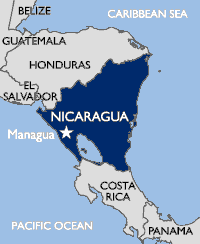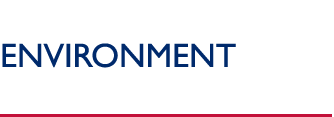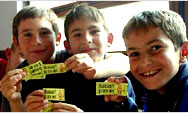Nicaragua
Through USAID’s activities in the areas of natural resources management and agriculture, including the introduction of income generating forestry certification schemes, Nicaragua has taken significant steps in addressing climate change and mitigating its effects. This has been vital to preserve the country’s mega-diversity, promote economic growth, and confront natural disasters.
Background

Although Nicaragua is prone to natural disasters, including floods, droughts, earthquakes, volcanic eruptions, and hurricanes, it continues to have a limited capacity to respond to and recover from these disasters. Through the Opportunity Alliance for Central America, USAID is working in close collaboration with partners in the region to tackle their key constraints to competitiveness, including disaster preparedness and environmental management. The latter is especially vital in the resource-rich area of Nicaragua. Nicaragua is located in the center of the Meso-American Biological Corridor, classified worldwide as a region of mega-diversity. The factors that benefit Nicaraguan biodiversity are topography, climate, and a complex geo-morphological, and biological and cultural history, all embodied in the National Protected Areas System.
USAID/Nicaragua’s environmental program is closely linked to USAID’s economic growth objective which supports small farmers to diversify production and increase output in a sustainable manner, development of small and micro-enterprises in rural and urban areas, improving the use of natural resources, and improving Nicaragua’s international trade competitiveness.
Sector-Specific Climate Change Activities
USAID’s climate change activities address natural resources management and sustainable forest management.
Nicaraguan Forestry, Agriculture and Tourism Alliance: This activity seeks to find viable, environmentally friendly economic alternatives and create market linkages for sustainably produced products. Technical assistance is being provided to increase “green market” competitiveness, identify regional and global markets in which Nicaragua has an advantage, and create market linkages between producers and markets for non-traditional agricultural products. The goal is to ultimately improve access to international markets and bring new investments that encourage forest conservation, improved forest management, and expansion of land under sustainable agricultural and agroforestry systems. Forest certification and sustainable agroforestry practices will increase income and employment to rural communities while helping to reduce net greenhouse gas emissions by preserving forest cover and maintaining carbon stocks in the soils.
In 2007, activities focused on “green” certifying and maintaining the certification of small coffee and cocoa farmers in Departments of Jinotega, Matagalpa, Nueva Segovia and Madriz, and developing forest certification plans for communities in the North Atlantic Autonomous Region (RAAN). Over 650 coffee and cocoa farmers received training in best agricultural practices and over 600 in natural resource management. This equates to 938 new hectares being incorporated into sustainable agriculture practices and 250 new hectares being incorporated into improved natural resource management.
This new initiative has a precedent in Nicaragua. It builds upon past projects to address climate change through improved natural resource management. USAID’s Co-Management of Protected Areas project similarly strengthened protected area management and supported the usage of alternative livelihoods to raise rural incomes and promote biodiversity conservation.
From 2004-2006, the Co-Management of Protected Areas Project, funded by USAID and implemented by The Nature Conservancy (TNC), provided training and technical assistance to managers of six protected areas (Estero Padre Ramos, Isla Juan Venado, Cosiguina Volcano, Meseta Tisey-Estanzuela, Cerro Musum and Chocoyero-El Brujo) covering 85,931 hectares. In 2005-2006, USAID assistance increased the capabilities of the government and local non-government organizations to co-manage each protected area. Each area includes significant forest and biological resources. The total area under improved management in 2006 was over 773,031 hectares, including the BOSAWAS Biosphere Reserve under Parks in Peril Program (PiP), in which over 50 communities and indigenous groups participated. With the collaboration of TNC and the World Wildlife Fund (WWF), government officials and NGO staff were trained in the usage of tools and instruments for improved protected areas management, environmental education, alliance building, ecotourism, sustainable financing, and other topics.
WWF also assisted the community of Las Crucetas in managing 11,200 hectares of forest, six indigenous communities (the SIPBAA block) with 12,000 hectares of forest, and Layasiksa with 4,500 hectares for a total of 27,700 hectares under improved management practices. Using their newfound forestry business practices, the Layasiksa and the SIPBAA block harvested 1,291 cubic meters and 915 meters of wood respectively. Both communities are preparing for certification of their processes, while the community of Las Crucetas completed the forest certification process of the Forestry Stewardship Council. Improved management practices are based on reduced impact logging (RIL), and include tree inventorying and mapping, directional felling, long term management plans, and annual plans for allowable cuts. In 2006, over 2,480 cubic meters of wood were harvested from these communities. Implementation of RIL will result in reduced carbon emissions from collateral damage and soil erosion during logging operations.
Partners
USAID’s partners in climate change activities in Nicaragua include:
- Ministry of Environment and Water Resources (MARENA)
- Rainforest Alliance
- World Wildlife Fund (WWF)
Because partners change as new activities arise, this list of partners is not comprehensive.
Back to Top ^
|


